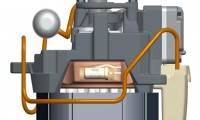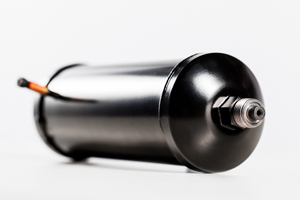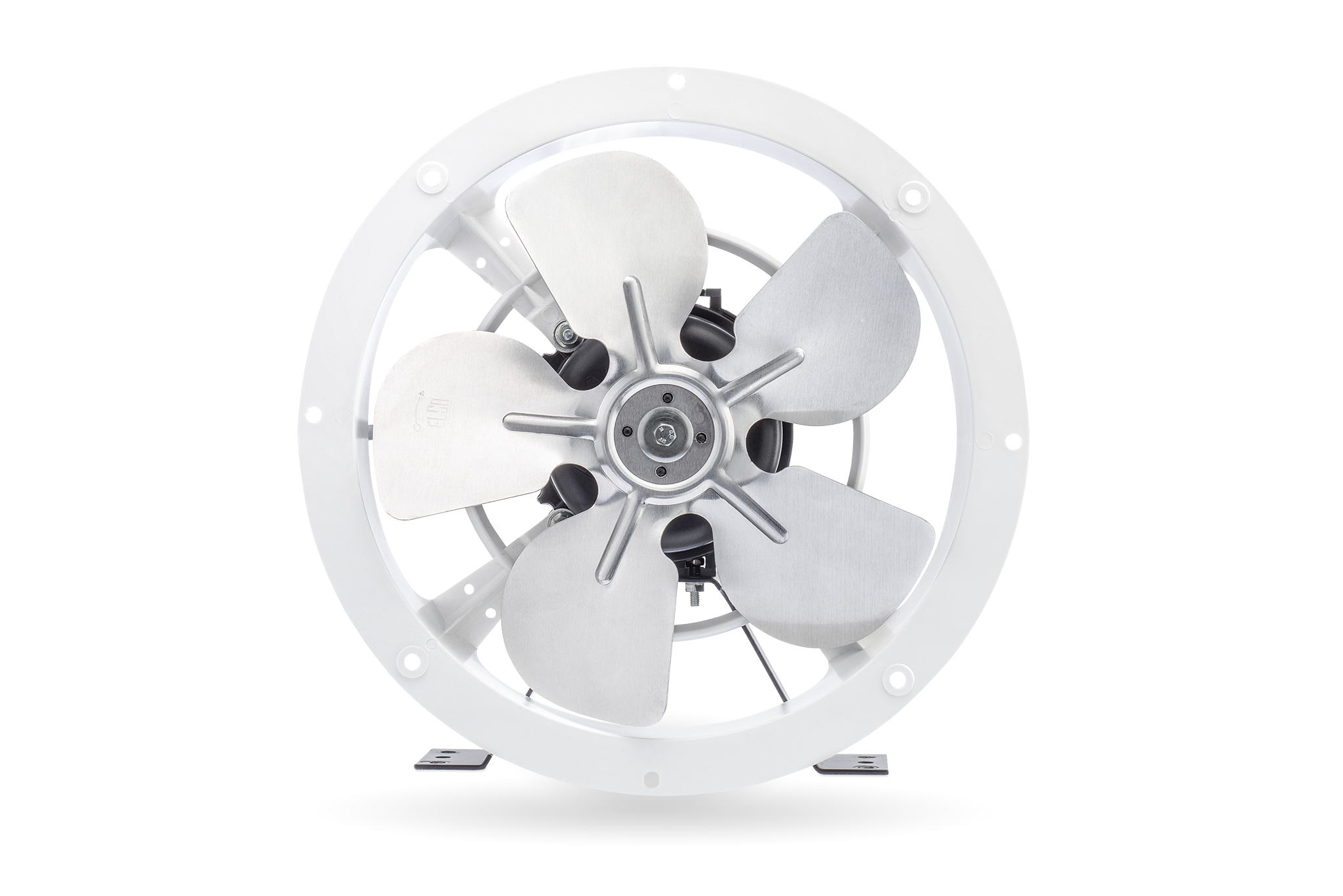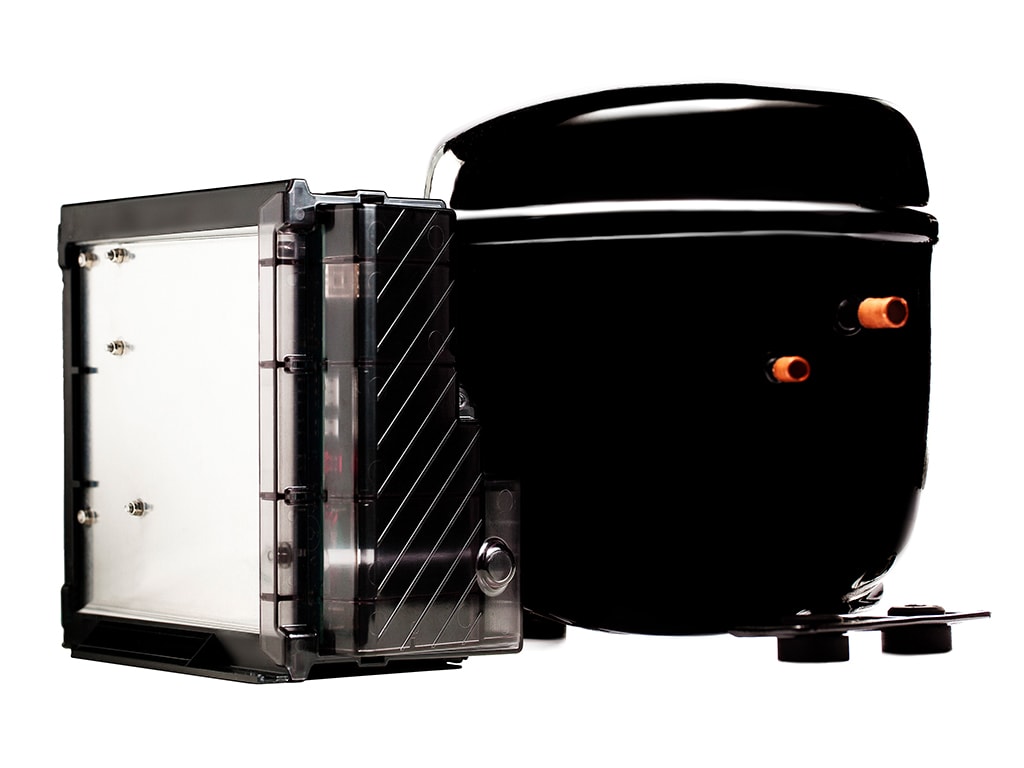What you need to know about their use in commercial refrigeration
In the previous edition, we presented the electric components typically used in household refrigeration. In this edition, which is the second in a series of three on this topic, we’ll talk about their use in commercial refrigeration: what are the types of components used most frequently, how they work and what problems may occur when choosing an incorrect model. Similar to what happens in household refrigerators, commercial refrigeration equipment use three basic components:
- Starting devices;
- Capacitors;
- Thermal protectors.
Remember that compressors belonging to the same family often don’t use the same electric components, even if their capacities are similar. The electric set is defined based on aspects such as voltage, frequency, operating envelope (L/M/HBP) and starting torque. Therefore, the specifications of each model should be observed. It’s also important to pay attention to a distinguishing feature of Embraco Aspera compressors, which incorporate a CSR Box, a type of junction box, which includes a voltage relay, start and run capacitors. The query for the appropriate components for each compressor can be made in the electronic catalog available on Embraco’s website. (www.embraco.com/catalog). CSR with voltage relay
Starting devices
The starting device, as its name indicates, has as its primary function to assist on start-up, generating the torque required for motor rotation. After starting, the auxiliary winding is disconnected. Besides this basic function, these devices may allow the connection of a run capacitor and/or start capacitor. When they fail, the refrigeration system will always stop working, since the compressor doesn’t start-up or starts but ends up stopping again by the triggering of the thermal protector.

For commercial refrigeration, depending on the type of equipment and manufacturer’s design, different starting auxiliary devices can be used:
- Amperometric or electromechanical relay;
- PTC relay;
- Voltage relay.
To learn more about electromechanical and PTC relays, see the article published in this section of the Club No. 122 (June/2015). Let’s concentrate here on voltage relays, used on larger compressors, which require both a start and run capacitor. This relay type is also called a potential relay, magnetic voltage relay or voltage relay and is characterized by keeping its contacts closed. Its coil is connected in parallel with the compressor’s starting coil. The voltage in the starting coil increases as the motor speed goes up. When the projected speed is reached, the voltage relay’s contacts open and the start capacitor is disconnected from the circuit.
Capacitors
As we’ve already explained, in the previous article, the capacitors’ main function is to store electrical charges on their electrodes. These charges are held for a certain time period, even if there is an interruption of power supply. In relation to their use in commercial refrigeration, the importance of correctly specifying starting and running capacitors should be emphasized. There are suitable models for each type of application, which were designed for the characteristics of different compressor motors. Installing a different capacitor than that specified or including a start or run capacitor that was not in the original compressor design is an incorrect procedure, which can seriously impair compressor safety and performance. As we’ve already seen, run or running capacitors allow the passage of current through the compressor’s coil auxiliary after its start-up, allowing the auxiliary winding to also contribute to the motor’s operation. Motors that use a run capacitor are designed for this and incorrect application of this component may cause auxiliary coil overloading, leading to compressor damage. Other essential information is that these devices cannot be used in compressors that use electromechanical relay. To work with commercial refrigeration equipment, it’s important to know more about starting or start capacitors, which are little used in household refrigeration. These components, which assist in the compressor’s start-up, should be present only in models that use electromechanical or voltage relay (that is, they can’t be used in compressors with PTC or TSD). Its function is to increase the compressor’s starting strength. This explains why they are mandatorily used in HST (high starting torque) compressors. Models with low starting torque (LST) are designed without considering its use as compulsory however some of them come with a start capacitor, as this facilitates the compressor start-up in low-voltage conditions. In situations where refrigeration systems may start-up with unequal pressures – due to the compressor’s off-period being too short or because an expansion valve is used – the use of a start capacitor is also recommended, since this situation requires an extra effort from the compressor at start-up. It’s worth remembering that each compressor model has its specific capacitor. The use of an inadequate version can cause serious problems such as delaying the triggering of the thermal protector, causing the compressor to burn-out. Therefore, it’s essential to consult the compressor’s technical information.
Thermal protectors
Protetor-termico-interno Internal thermal protector (in the center) Used to protect the compressor by preventing it to reach temperatures that cause damage or burn-out, these components are therefore essential and obligatory. The thermal protector will trigger, for example, when the condensation temperature is too high due to fan failure or condenser blockage. There are several other causes that can be found in the previous article. As with all types of components, also in case of thermal protectors there are specific models to use with each compressor. As this is an essential component for the compressor’s safety, the manufacturer’s recommendation should be carefully followed and it should be installed properly. This will prevent problems such as it not operating properly or operating at an improper time. The most common thermal protectors are external ones, which are placed next to the compressor’s hermetic fusite terminal. For larger compressors such as those used in commercial refrigeration the ¾ type thermal protector is more frequently used. However, some smaller capacity models for commercial application use a 4TM type thermal protector. Other important information to emphasize, specifically regarding commercial refrigeration is the use, in some compressor models, of internal thermal protectors (i.e., those placed inside the compressor). This is the case of some Embraco Commercial compressor models (Aspera), such as the families T and NTU, and Bristol compressors. For not knowing this kind of protection device, some contractors, in examining the compressor, conclude – mistakenly – that it came without this component. To avoid this error, just consult the wiring diagram, which will show the presence of the internal thermal protector. These internal thermal protectors are technically advanced and have faster response times. They are positioned close to the hottest part of the coil, and thus evaluate the temperature directly on the motor, which makes them more accurate and reliable.



